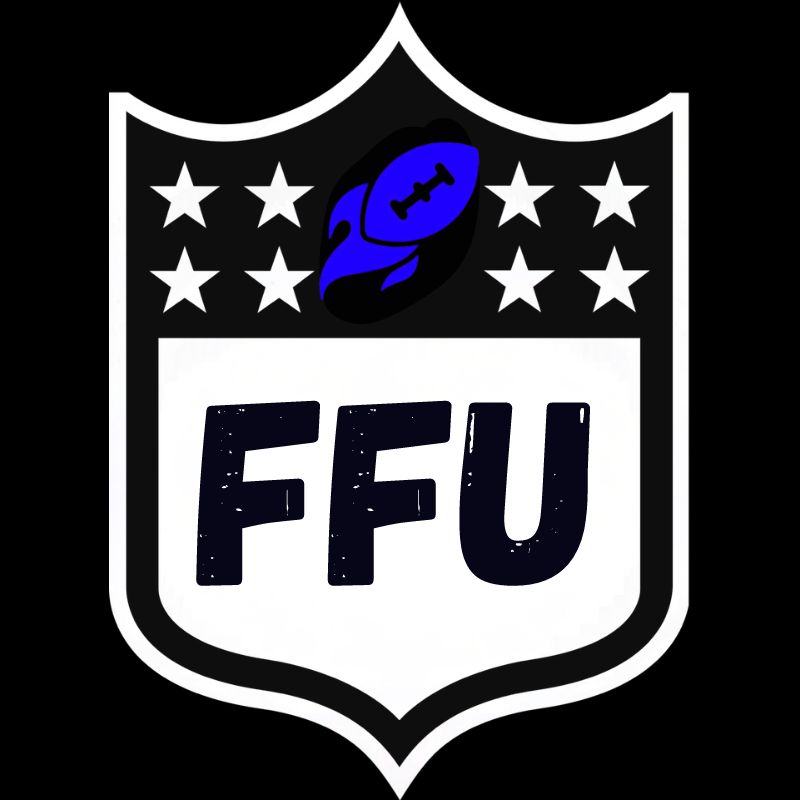For the general public, a standard fantasy football league suffices. If you’re reading this article, you may have grown weary of normal leagues and would like to try something new. Crash Course, a Fantasy Football Universe series, delves into unique formats. So, let’s start with Crash Course: Campus 2 Canton League.

How Does it Work?
Do you go into your rookie drafts hoping your guy gets to you at a certain pick? The player you have been following for the past 2 years in college football. The Campus to Canton is for you! The evolution of dynasty leagues allows you to take control of two completely different rosters for one league. Take control of an NFL (pro) roster. Like a typical dynasty league. Plus, put your football knowledge to the test by taking control of a CFF (college) roster.
How is it different?
Campus to Canton, or C2C, brings joy to fantasy football enthusiasts who also love college football. Each member of the league not only drafts a pro roster but also drafts a college roster. Usually, the college roster only consists of FBS schools.
The kicker is once any of your college players go pro they automatically join your pro team. For example, say I drafted Jayden Daniels when he was the quarterback at Arizona State. At the time his value was probably minimal. So, assume I kept him until now, his second year at LSU. Now I am bathing in glory because he is possibly the QB2 of the 2024 draft class. He will be on my pro roster at the start of the new season. Unless I trade him or drop him to the waivers.
How does the Draft work?
Like typical dynasty leagues, there is an annual rookie draft. However, the draft pool is typically smaller causing the draft to be shorter. Most annual rookie drafts in C2C leagues are one, maybe two rounds. Only incoming rookies who were not on any member college team are in the player pool. Plus, whatever free agents were left at the end of your pro season.
But 2 rosters mean two annual drafts right? Precisely. The annual college draft consists of incoming freshmen and any players who were not on a member’s college roster at the end of the season. Plus, players that may have transferred up to your FBS schools. For example, this year Oregon’s new transfer running back from Northwest Missouri State will be on all draft boards this upcoming season. This is because he transferred up in divisions. He transferred from a Division II school to a Division I school.
A look at the Rosters
Rosters cater to league preference. On the pro side of the ball, your typical “standard” roster remains the same. If one is a fan of the single QB format, then have one QB. However, some favor the idea of a super flex. If that is you then have a super flex. True fans of the game, like myself, favor IDP formats. This means we draft offensive players with defensive players rather than a full defense.
On the other hand, or should I say the other league, the college side it gets tricky. Again rosters cater to league preference. So, you can have the same exact lineup as your pro side. For example, if you are doing a super flex pro roster then you can have the same for your college roster. That would look something like (QB, 2RB, 2WR, TE, 2FLEX, SF) plus like 10 bench spots. One thing to consider when creating your college roster is the player pool. On a pro roster, there are 32 teams to pick players from. On the college side, there are over 120 schools (teams) to pick players from.
The college side roster could look something like (3QB,4RB,5WR, TE (TEs usually do not find as much success in college as they do in the NFL-an exception would be the Brock Bowers of college) & possibly 5FLEX). Plus, if one wanted to they could also add 2-3 super flex positions. Even with say 15-20 bench there would still be some players available on the waiver wires. In dynasty leagues, pro rosters have an area called “taxi”, a place to put rookies that might not see immediate playing time. There is a similar spot on college rosters called “minor” spots. This can be added to allow an area to put freshmen that may not see immediate work. (note like the “taxi” spot in pro rosters your commissioner can set it to be only freshmen on minor spots, nobody over 2 years of collegiate experience, etc.)
How does the Waiver Wire work?
Waiver wires can work the same as any other league format. One can set it to be rolling waivers. My personal favorite is having FAAB, a league currency one can use to bid on any free agent. The highest bidder gets that player.
How the scoring works
The scoring format is based on league preference too. If the league wants 4-point passing touchdowns then it can be done. Are you a fan of bonuses? Then the league can be set to get an extra point for every 50+ yard pass. The pro side & college side can mirror one another when it comes to scoring.
The Consensus Strategy
- Strategic Drafting: Like any fantasy format your path to glory starts at the draft. It does not end there as true competitors are active all season via trade & waiver wires. Your college team should not mirror your pro team. If you go hero RB on the pro side then go light RB on the college side. Vice versa if you go hero RB for your college roster then draft WR heavy on the pro side. Also, think about age. If you draft veterans that may have a one-year “shelf life” left then draft college players you know will go pro within one to two years. This means avoiding the freshman early to make up for the gap you will lose once the veterans go downhill.
- Know Your Scoring System: Understand the league’s scoring system thoroughly. Remember this is two different rosters for one league. Tailor your draft strategy and in-season management decisions to maximize points based on your league’s scoring settings.
- Do Not Scout the Helmets: In college drafts, it is easy to “scout the helmets”. This means paying attention to the school, not the athlete. Just because a player is at Georgia does not mean they will outproduce a player from Western Kentucky. Be aware of the possible production one may gain based on their role with their team.
- Draft Pro Prospects Early – College Prospects Later: In the first 10-12 rounds draft prospects with high draft capital potential. These would be college prospects with the potential to go on day one or two of the NFL draft. After those rounds look for prospects with college production. Not everybody on your team will go pro. Your college roster should be a mix of pro prospects and collegiate-only prospects.
My Strategy
- NFL Prospects Every Year: I try to have 5-6 prospects coming out every year. Sometimes this does not happen because some players choose to stay an extra year. Keep in mind though, that not every prospect is a first-round pick. So, 5-6 means some are even some day 3 prospects.
- College Hero RB: In my start-up drafts I tend to go light on the NFL side at the RB position. Why? Because we get fewer workhorse RBs and more committee backs in the NFL. Plus, there is a plethora of RBs on the college side. I rather get two solid RBs on my pro roster than build depth at other positions. Which then makes me draft heavy RB on my college side. I get more options and hope one of them becomes the next stud RB once they go pro.
- Wide Receivers are Many: Going heavy RB means I might be missing on some top-tier WRs This is true. However, in college football, there are over 100 schools to choose from. There will be many more WRs than RBs. Stack up on the RBs first then fill out with WRs.
- College QBs: In Superflex pro rosters having a strong QB core is important. Yes, that matters on your college rosters too. However, you do not need the top prospect to have a winning team. Caleb Williams was not the best QB in college football. He probably went high due to his pro potential. However, if you drafted depth at other positions then you could have struck gold at drafting a QB like James Madison’s Jordan McCloud much later! Do not go QB-heavy early on. You will be missing out on solid players at other positions.
In Closing
Campus to Canton leagues are not for members who check out once the season is over. These leagues bring you into football year-round. You have to pay attention to the transfer portal. Spring games happen before OTA’s which could give you good insight on college players. It is wise to know a little bit about the incoming freshman to get ahead of your competition.
C2C leagues demand endurance. Year-round commitment. You are no longer working to create one dynasty, but two dynasties! The best part is that it is all under one roof.
This format suits those seeking to dive deeper into football. Once in you become more aware of future NFL prospects. You gain more love for the game.
Don’t forget to check out the rest of the Crash Course Series.

